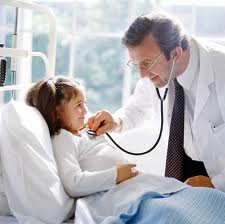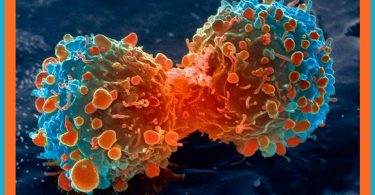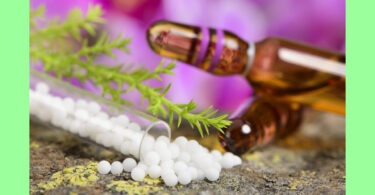Excerpted from: The Hahnemannian Monthly Vol 7, Jan – Dec 1888.
 Before proceeding with a discourse upon the above subject it seems to me important, for its better understanding, to briefly explain the true philosophy of disease. Every disease, of whatever nature, has its origin, its progress and its termination. The whole human race is constantly exposed to morbific or disease-producing influences of some kind. In order that any disease may originate in an individual, it is absolutely necessary for an influence or morbific agent to become as it were planted in that individual, that it may there take root and grow. Of course then it must have a living, a vital form of existence. As a disease grows, its effects or phenomena become manifest, and these become its symptoms and constitute the disease itself. To illustrate the preceding remarks, I will adduce the following.
Before proceeding with a discourse upon the above subject it seems to me important, for its better understanding, to briefly explain the true philosophy of disease. Every disease, of whatever nature, has its origin, its progress and its termination. The whole human race is constantly exposed to morbific or disease-producing influences of some kind. In order that any disease may originate in an individual, it is absolutely necessary for an influence or morbific agent to become as it were planted in that individual, that it may there take root and grow. Of course then it must have a living, a vital form of existence. As a disease grows, its effects or phenomena become manifest, and these become its symptoms and constitute the disease itself. To illustrate the preceding remarks, I will adduce the following.
We vaccinate a person; if the vaccination ‘takes,’ that is, takes root and grows, all the phenomena that follow become and constitute the symptoms of cow-pox. So of the disease called small-pox. If an exposure to its morbific influence becomes effective, then it has taken root in the individual so exposed; it grows, and the phenomena which follow characterize the growth as small-pox. The same philosophy is true of measles, of whooping cough, of mumps, of all the different kinds of fevers, of gonorrhoea, chancre, and so of all the manifold disorders to which flesh is heir. They all have a distinct origin, and a specific growth, some very short lives, others of years’ continuance, displaying symptoms often many sided and wonderfully diversified, all of which as a whole constitutes the disease. Such in brief is the true philosophy of all diseases.
It is truly wonderful that Samuel Hahnemann, one hundred years ago, should have recognized the above facts and have discovered and established a corresponding and an equally true philosophy for curing diseases. This work he effected by constructing his masterly Materia Medica, by proving one remedy at a time, bringing out and displaying symptoms peculiar to each and which are often as many sided and wonderfully diversified as are the disorders we find in our daily experience. This comprises the whole philosophy of Homoeopathy pure and simple by a profound knowledge of the entire phenomena of a disease so as to know what is to be cured, and again a profound knowledge of the entire phenomena of a well proven remedy, so as to know what it is capable of curing. Then a proper selection of the latter placed in juxtaposition to the former, results sooner or later in a cure.
This is both a rational and a logical idea, and fully accords with Hahnemann’s Organon, which reads as follows, paragraph 12: “It is solely the morbidly affected vital principle, which brings forth disease, so that the expression of disease perceptible by the senses, announces at the same time, all the internal change — that is, all the morbid perturbations of the vital principle; in short, it displays the entire disease.” And in a footnote to the same paragraph, “In what manner the vital principle produces morbid indications in the system, that is, how it produces disease, is to the physician a useless question, and therefore will ever remain unanswered. Only that which is necessary for him to know of the disease, and which is fully sufficient for the purpose of cure, has the Lord of life rendered evident to his senses.”
We are now prepared to proceed with the main question, “The examination of the patient for the choice of the remedy.” This is altogether a different procedure from the one mentioned in the paper just read. Although by a clear diagnosis of a disease, our attention may be directed to a certain class of remedies which in such classes have been used most frequently or successfully, it does not by any means reveal to us the remedy for a given case. (These lists of remedies for certain types of diseases are increased every year by the observation of new peculiarities, or new combinations in actual cases presenting themselves at the bed-side, and by means of careful comparison with the Materia Medica.)
Such peculiarities we find in the nature of pain, its location, its shifting, its tempo (incessant or spell-wise, coming suddenly and leaving suddenly, or increasing slowly to a certain pitch, and then decreasing slowly, etc.); the causes or conditions by or through which pain is ameliorated or aggravated, relieved entirely, or brought on anew; in the nature or peculiarities of the discharges, from where they may issue; in the peculiarities of the mental or emotional state of the patient; in the causes which lie at the bottom of the present morbid manifestations; in the succession of the symptoms in which the latest are often the leading symptoms for the choice of the remedy. These peculiarities are only a few of those which we are obliged to take into account in every examination of the patient for the choice of the remedy. The art of prescribing for the sick is an art to be learned as in every other art, and when well learned, we practice it almost unconsciously. That is to say, the mind grasps the whole matter of prescribing, and performs a vast amount of labor, coming to conclusions that are accurate and successful in a very short time. A physician of ripe experience has often only to cast his eye upon a patient, and in that one look his mind reads volumes in a moment, and his choice of a remedy is made and a successful choice it will prove to be.
Would we become so proficient, it is only necessary to devote ourselves to the task. How much time a practical chemist has to devote to his laboratory and how nice and accurate must he be in all his experiments and operations in order to become skilful and successful. He must follow expressed rules and be governed by principles, and then much patient labor will bring him liberal awards. The same is true of all the arts and sciences, would one become proficient therein. So in the practice of Homoeopathy. Would we advance and move the world before us, we must be governed by the principles underlying our science, and follow such expressed rules as will enable us to apply and rely upon our principles with all the firmness of the rocks of Gibraltar.
The skilful examination of the patient for the choice of the remedy in all cases, unquestionably will lead us to that pinnacle of fame in healing the sick that no other course can do. To carry out this plan is, in the beginning, slow and tedious; but it is the learning how to do it, and when learned it becomes rapid and efficient.
The plan of examining the patient for the choice of the remedy, could not be better explained than Hahnemann himself has done it in his Organon in paragraphs 83-99 inclusive; by reading these paragraphs over and over again, and becoming perfectly familiar with the process, and then by carrying the plan into actual practice, although slow and tedious at first, after a while the plan becomes rapidly performed with great precision and the most perfect efficiency — rendering entirely unnecessary all Allopathic afflictions, such as hypodermic injections, opiates, purgatives, emetics, mustard plasters, warmbaths, etc., etc. Drs. Hering, C. Dunham, P. P. Wells, Wm. P. Wesselhoeft, and the members of the Bureau, presenting these papers to-night, and all here and everywhere who practice Homoeopathy pure and simple, have all waded through this very tedious plan, and waited until proficiency in the true and efficient way was attained.
And now allow me to ask, is this symptomatic treatment? The contemptible symptomatic treatment lies wholly on the other side of the way, where pain, no matter of what kind or origin, is suppressed by morphine injections, where sleeplessness is converted into stupor by morphine, chloral, or bromide of potassium, where constipated bowels are liquefied by purgatives, diarrhoea is checked by opiates, where intermittents and other fevers are covered over by quinine, where rheumatism is exploded by salicylic acid and the patient too, and where typhoid fevers are drowned in brandy, etc.
Now the initiated and the educated can see plainly enough how the matter stands, and, can perceive and estimate between the vulgar and eclectic method of practice and the nice scientific and rational methods of Samuel Hahnemann. One thing further needs to be considered, where there is a scarcity of symptoms, and, as some non-observers often say, no symptoms at all, such observers and practitioners need to consult paragraphs 144-147, inclusive, of the Organom and to follow the teaching therein described.
In fact, Samuel Hahnemann’s Organon of the art of healing offers the only successful plan, and all that can be desired in restoring health to the needy, by selecting the proper remedy.







Informative!!!